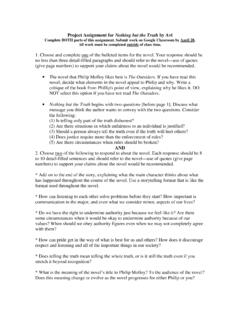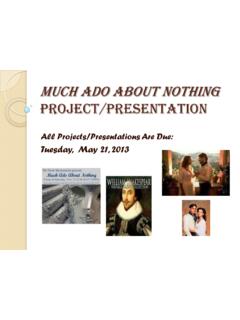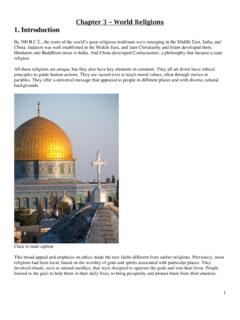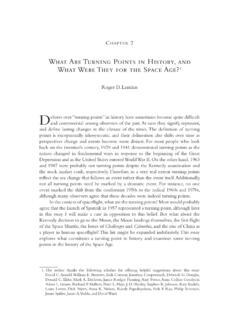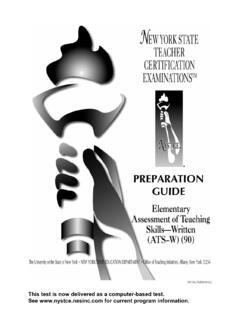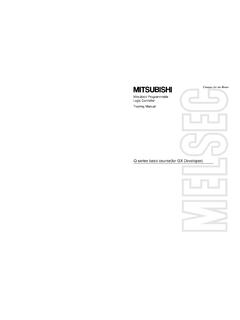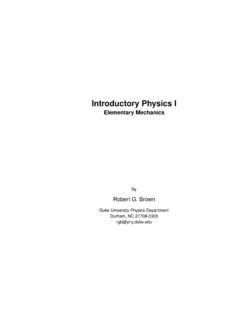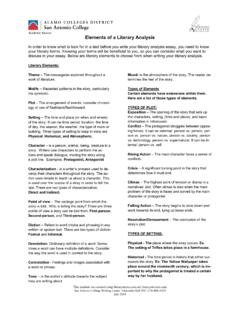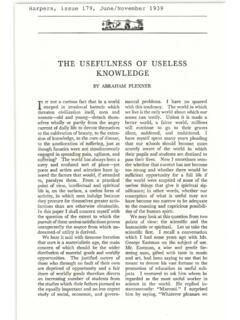Transcription of Writing Great Fiction
1 Writing Great Fiction : Storytelling Tips and TechniquesLiterature & LanguageTopicCourse GuidebookProfessor James HynesNovelist and Writing InstructorWritingSubtopicPUBLISHED BY:THE Great COURSESC orporate Headquarters4840 Westfields Boulevard, Suite 500 Chantilly, Virginia 20151-2299 Phone: 1-800-832-2412 Fax: The Teaching Company, 2014 Printed in the United States of AmericaThis book is in copyright. All rights reserved. Without limiting the rights under copyright reserved above,no part of this publication may be reproduced, stored in or introduced into a retrieval system, or transmitted, in any form, or by any means (electronic, mechanical, photocopying, recording, or otherwise)
2 , without the prior written permission ofThe Teaching Hynes, and Writing InstructorProfessor James Hynes is a working novelist who has taught creative Writing as a visiting professor at the University of Iowa Writers Workshop, the University of Michigan, The University of Texas, Miami University, and Grinnell College. He earned a Bachelor of Arts degree in Philosophy from the University of Michigan in 1977 and a Master of Fine Arts degree from the Iowa Writers Workshop in Hynes is the author of four novels: Next, which received the 2011 Believer Book Award from Believer magazine.
3 LQJV RI ,Q QLWH 6 SDFH, a :DVKLQJWRQ 3 RVW best book for 2004; 7KH /HFWXUHU V 7 DOH; and 7KH :LOG &RORQLDO %R\, which received the Adult Literature Award from the Friends of American Writers and was a New York Times Notable Book for 1990. His novella collection 3 XEOLVK DQG 3 HULVK 7 KUHH 7 DOHV RI 7 HQXUH DQG 7 HUURU was a 3 XEOLVKHUV :HHNO\ Best Book of 1997 and appeared on several critics best-of-the-year Hynes has received numerous literary grants and teaching fellowships. He received a James Michener Fellowship from the University of Iowa (1989 1990), and he was a member of the Michigan Society of Fellows at the University of Michigan (1991 1994).
4 He received a Teaching- Writing Fellowship from the Iowa Writers Workshop at the University of Iowa (1988 1999) and a Michigan Council for the Arts writer s grant (1984). As an undergraduate, he received the Hopwood Short Fiction Award from the University of Michigan (1976).Professor Hynes is also a media and literary critic. He is a former television critic for 0 RWKHU -RQHV, 7KH 0 LFKLJDQ 9 RLFH, and ,Q 7 KHVH 7 LPHV. His book reviews and literary essays have appeared in 7KH New York Times, 7KH :DVKLQJWRQ 3 RVW, Boston Review, 6 DORQ, and other Hynes lives in Austin, Texas, the main setting of his novel Next, DQG LV FXUUHQWO\ ZRUNLQJ RQ D QHZ QRYHO iiiTable of ContentsLECTURE GUIDESINTRODUCTIONP rofessor Biography.
5 ICourse Scope ..1 LECTURE 1 Starting the Writing Process ..4 LECTURE 2 Building Fictional Worlds through Evocation ..10 LECTURE 3 How Characters Are Different from People ..17 LECTURE 4 Fictional Characters, Imagined and Observed ..24 LECTURE 5 Call Me Ishmael Introducing a 6 Characters Round and Flat, Major and Minor ..38 LECTURE 7 The Mechanics of Writing Dialogue ..45 LECTURE 8 Integrating Dialogue into a Narrative ..52 LECTURE 9 And Then Turning a Story into a Plot ..59 LECTURE 10 Plotting with the Freytag Pyramid ..65ivTable of ContentsLECTURE 11 Adding Complexity to 12 Structuring a Narrative without a Plot.
6 78 LECTURE 13In the Beginning How to Start a Plot ..84 LECTURE 14 Happily Ever After How to End a Plot ..90 LECTURE 15 Seeing through Other Eyes Point of View ..97 LECTURE 16I, Me, Mine First-Person Point of View ..104 LECTURE 17He, She, It Third-Person Point of View .. 111 LECTURE 18 Evoking Setting and Place in Fiction .. 118 LECTURE 19 Pacing in Scenes and Narratives ..125 LECTURE 20 Building Scenes ..132 LECTURE 21 Should I Write in Drafts? ..139 LECTURE 22 Revision without Tears ..145 LECTURE 23 Approaches to Researching of ContentsvLECTURE 24 Making a Life as a Fiction Writer.
7 159 Appendix: Punctuating Dialogue ..165 Bibliography ..169 SUPPLEMENTAL MATERIALvi1 Scope:We all think we have a novel in us, and in this course of 24 lectures, a professional novelist will guide you through a survey of the most important concepts and techniques behind the creation of FRQWHPSRUDU\ SURVH FWLRQ XVLQJ H[DPSOHV IURP D ZLGH UDQJH RI FODVVLF novels and stories, as well as some demonstrations of his own process. By taking you step by step through such topics as creating characters, composing dialogue, crafting plots, and using different points of view, this course will help you get that book out of your head and heart and into the hands of 1 considers how to prepare yourself.]
8 Both logistically and HPRWLRQDOO\ IRU EHJLQQLQJ WR ZULWH D SLHFH RI FWLRQ DQG /HFWXUH H[SORUHV WKH FRQFHSW RI HYRFDWLRQ RU WKH DUW RI PDNLQJ FWLRQDO FKDUDFWHUV LQ D FWLRQDO ZRUOG FRPH DOLYH ZKLFK LV IXQGDPHQWDO WR PRVW FWLRQ 7KH QH[W IRXU OHFWXUHV SURYLGH DQ LQWURGXFWLRQ WR WKH FUHDWLRQ RI FWLRQDO FKDUDFWHUV ,Q /HFWXUH ZH H[SORUH WKH GLIIHUHQFHV EHWZHHQ FWLRQDO characters and real people and consider how a person who is only a few thousand words on a page can come to life in the mind of the reader. Lecture 4 shows how you can create credible and interesting characters by combining your imagination with observations of real people.]]]
9 Lecture 5 looks at several ZD\V RI LQWURGXFLQJ D FKDUDFWHU LQWR D QDUUDWLYH IRU WKH UVW WLPH DQG /HFWXUH H[DPLQHV GLIIHUHQW W\SHV RI FKDUDFWHUV VXFK DV URXQG DQG DW FKDUDFWHUV and major and minor characters, and explores how they work together in a story or next two lectures are about Writing dialogue. Lecture 7 explains the mechanics and grammar of dialogue, including tips on when and when not to use dialogue tags and adverbs. Lecture 8 is about using dialogue to evoke character and tell a story and about integrating dialogue seamlessly into the rest of the narrative.]
10 Writing Great Fiction : Storytelling Tips and TechniquesScope22 Next comes the longest block of lectures in the course , six lectures about plot. Lecture 9 introduces the subject by discussing the difference between a story and a plot and by showing three ways to structure a traditional plot. Lecture 10 demonstrates how traditional plots can usually be diagrammed with the well-known Freytag pyramid, while Lecture 11 suggests ways you can rearrange or adapt the individual pieces of a traditional chronology to make your plot more complex and intriguing.


